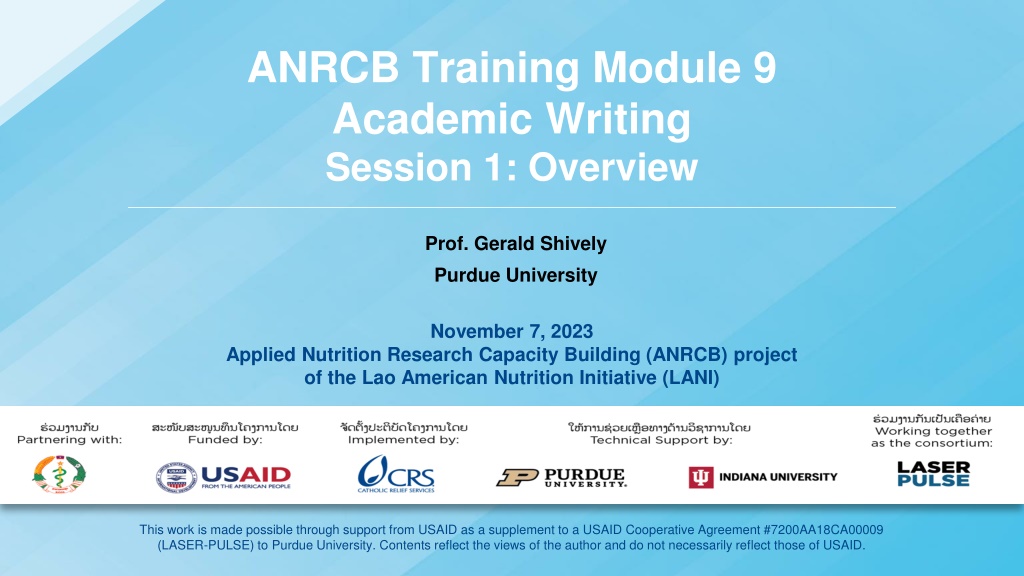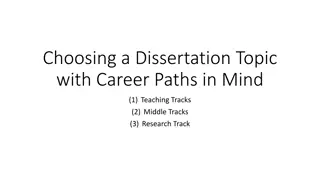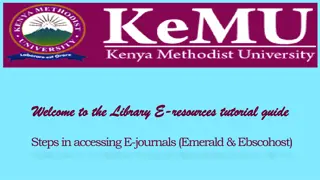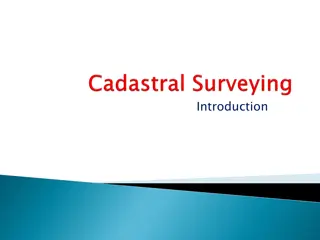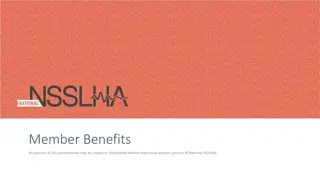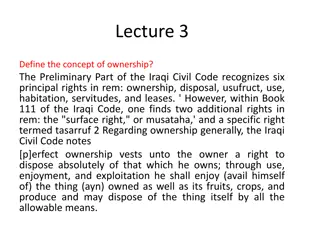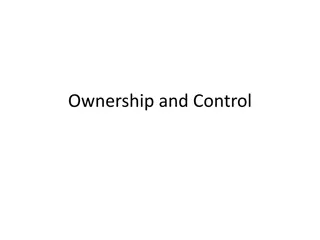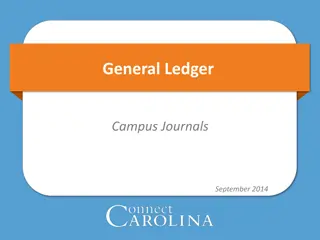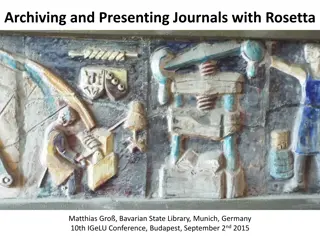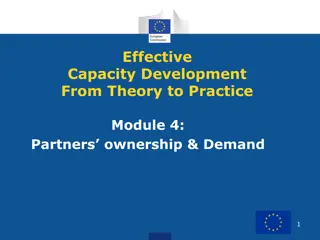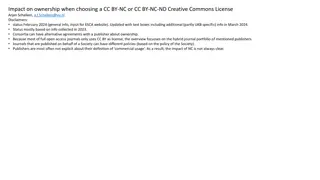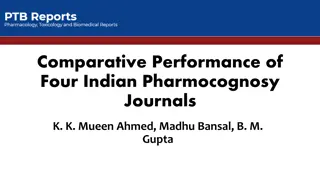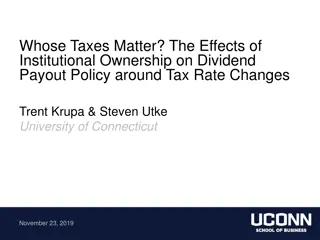Understanding Academic Journals: Ownership, Operations, and Processes
Explore the inner workings of academic journals, including ownership by the academic community, key operational structures, and the review process timeline. Gain insights into reputable vs. predatory publishers, implications of ownership, and the roles of editors, reviewers, and policy boards.
Download Presentation

Please find below an Image/Link to download the presentation.
The content on the website is provided AS IS for your information and personal use only. It may not be sold, licensed, or shared on other websites without obtaining consent from the author. Download presentation by click this link. If you encounter any issues during the download, it is possible that the publisher has removed the file from their server.
E N D
Presentation Transcript
ANRCB Training Module 9 Academic Writing Session 1: Overview Prof. Gerald Shively Purdue University November 7, 2023 Applied Nutrition Research Capacity Building (ANRCB) project of the Lao American Nutrition Initiative (LANI) This work is made possible through support from USAID as a supplement to a USAID Cooperative Agreement #7200AA18CA00009 (LASER-PULSE) to Purdue University. Contents reflect the views of the author and do not necessarily reflect those of USAID.
List of Sessions in Training Module 9 Session 1 Topic Overview of academic writing and publishing Author/Presenter G. Shively, Purdue University 2 3 4 Answering five key questions Writing an effective research question The Introduction section G. Shively, Purdue University S. Ghosh, Purdue University N. Gunaratna, Purdue University 5 R. Ambikapathi, Cornell University The Methods section 6 7 8 9 10 R. Zoh, Indiana University K. Eddens, Indiana University C. Tekwe, Indiana University S. Ghosh, Purdue University G. Shively, Purdue University The Results section The Discussion section The Conclusions section References and citations Responsible conduct of research ANRCB | 2
How do Academic Journals Operate? ANRCB | 3
Academic Journals Who owns a journal? A reputable publisher? A predatory publisher? A university? An academic association? In the most general sense, journals are owned by the academic community. Governed by page budgets, which are an important and binding constraint. Typical acceptance rates at reputable journals range from 10 to 50%. What are the implications? ANRCB | 4
Structure of Journal Operations Journal Owner/Publisher Policy Board Editor(s) + Assistants Associate Editors ( super reviewers ) Reviewers Few incentives for reviewers or Associate Editors Few options to enforce a reviewing request ANRCB | 5
Elapsed time from submission to final decision 27 paper submissions, no particular order. Average time to a final decision 373 days Source: Pannel, David (2002). Prose, psychopaths and persistence: Personal perspectives on publishing. 46thAnnual Conference of the Australian Agricultural and Resource Economics Society, Canberra, 13-15 February. ANRCB | 6
Elapsed time at Agricultural Economics Elapsed time to decision .01 Density .005 0 0 100 200 300 400 500 days Accepted R&R Rejected ANRCB | 7 n=2,157 (includes resubmissions)
Editors Gatekeepers for the journal Usually appointed by publisher or academic association Typically serve for 5-10 years Rarely have an agenda Serve the academic community Publish the best papers submitted (how do we define best ?) Editors are busy people Most teach, conduct their own research, supervise students, administrate, etc. Editing is typically an extra responsibility with only modest rewards ANRCB | 8
Editorial Board Typically appointed by the Editor Rarely have strong involvement in day-to-day operations May help to: Review papers Approve special issues Recommend Associate Editors Often there to enhance the reputation of the journal ANRCB | 9
Editors Responsibility Fill the journal with papers that will be widely read and highly cited Accept papers with novel methods and general appeal Serve as a gatekeeper for the community by quickly rejecting bad papers without using up a lot of reviewer time/goodwill Avoid mistakes and arbitrariness Better to reject a good paper than accept a bad paper Trust the review process but avoid reviewer meddling 10
Decisions Running a journal is an exercise in constrained optimization Understanding constraints is essential to understanding how to improve your chances of getting your papers reviewed and accepted. Possible editor decisions/outcomes Accept as is (extremely rare) Desk reject (common) Send for review, followed by: Reject Revise and resubmit 11
Desk Rejects Many papers are desk rejected Editor rejects the paper without sending it for review 0-50% of papers (or more) depending on the journal Can be helpful for authors in some cases Which papers get desk rejected? Papers considered a poor fit for the journal Those that ignore journal guidelines Papers with weak analysis, small samples or problematic writing Narrow subject with no generalizable findings or methods 12
Accepted and Sent for Review Editor will Assign Associate Editor and/or reviewers Match subject matter and methods Pick reviewers who know something about the topic Typically 2 or 3 reviewers; sometimes only 1 Reviewers are asked to return comments (in 2-3 months) Resolving split decisions Additional rounds of review Editor or Associate Editor as tie-breaker 13
Revise and Resubmit No guarantee of acceptance Reviewers work for the editor, not the author As the author, you will only see part of the reviewers comments (not the cover letter, which may be less positive) A substantial share of R&Rs are eventually rejected Some papers that reviewers accept the editor rejects. Why? perception of weak review similar or better papers in the pipeline space limitations and narrow appeal 14
Rejection Expect rejection. It happens to everyone. Move on and don t take it personally. Challenging a decision rarely works. Take the comments SERIOUSLY and don t immediately send a flawed paper back out without revising it. With 2 referees and an editor, the chances of getting three accept decisions is rather low, especially at a top journal. Plan for multiple resubmissions. 15
Strategy Avoid small and obvious mistakes Align subject matter with journal aims Be clear about the research question 50% of negative reviews focus on this! Be clear about your methods the other 50% focus on this! Make sure your lit review is complete and current The reviewer is likely to be familiar with the field Short papers are more likely to succeed 16
